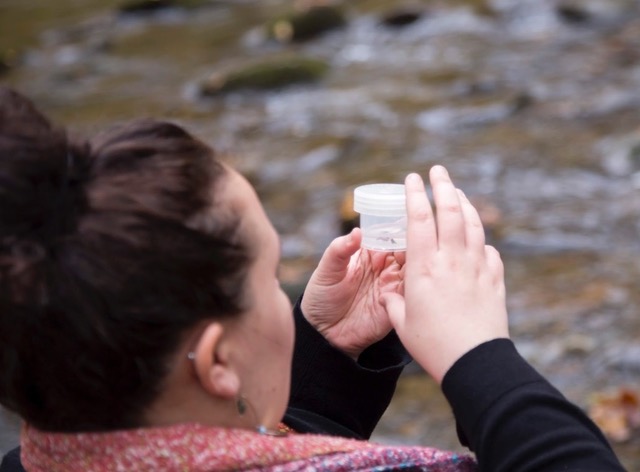
This month, my Experience Your Smokies class got another peek behind the curtain of park operations and traveled to Twin Creeks Science Center to fish out aquatic invertebrates.
At park headquarters, we were greeted by park Superintendent Cassius Cash, Deputy Superintendent Clay Jordan, GSMA CEO Laurel Rematore, and Holly Scott Jones, formerly of Friends of the Smokies. Each speaker provided insight into park operations and detailed the difference between NPS and their nonprofit partners. We discussed the maintenance of historic structures, the importance of the park’s cultural resources, and volunteerism, the ‘priceless’ resource. Most importantly, we learned that a park as big as the Smokies requires endless cooperation and engagement.
Park entomologist Becky Nichols guided our afternoon activity. She helps us dive into a small part of what is actually a very big picture. We began by donning waders and getting in the water. Using nets and our hands, we searched for mayflies, stoneflies and caddisflies. These tiny insects are hard to find and see, but their impact is enormous, Becky assured us. These insects are some of the best diagnostic tools in the park. By regularly collecting and examining these stream insects, resource management staff make scientific deductions about water quality upstream, stream health and changes in the landscape.
Next, we travelled to Twin Creeks Science and Education Center, a facility that exists today thanks in part to GSMA funding. Home to the park’s natural history collection, tens of thousands of the park’s collected vertebrates, invertebrates, plant, lichens, and fungi reside here. On each specimen, the date, location, and collector are listed, some dating back to the early 20th century. It blows your mind to think about it: in one normal-sized room in the small town of Gatlinburg, TN, you can find one of the greatest natural history collections and most diverse herbariums on the planet.
Subscribe to get the latest posts sent to your email.
The Great Smokies Welcome Center is located on U.S. 321 in Townsend, TN, 2 miles from the west entrance to Great Smoky Mountains National Park. Visitors can get information about things to see and do in and around the national park and shop from a wide selection of books, gifts, and other Smokies merchandise. Daily, weekly, and annual parking tags for the national park are also available.